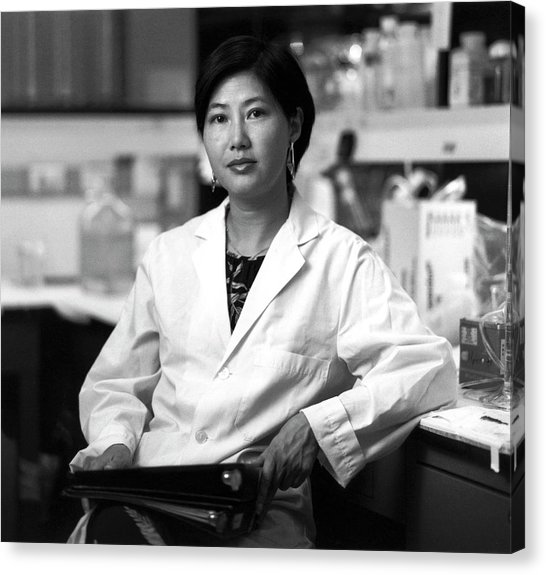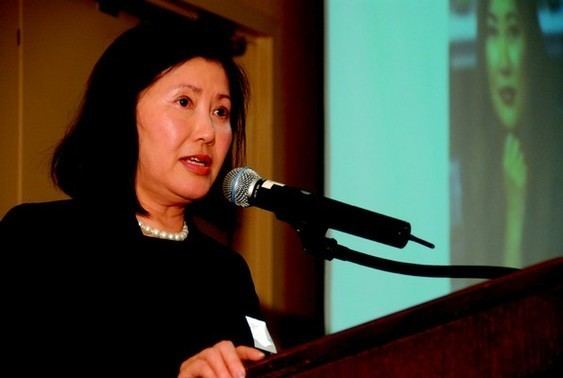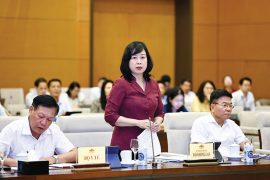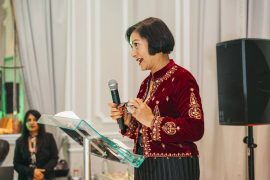Flossie Wong-Staal is a woman who has made tremendous strides in the fight against AIDS. She is a Chinese-American virologist and molecular biologist. She was the first scientist to clone HIV and determine the function of its genes, a major step in proving that HIV is the cause of AIDS. From 1990 to 2002, she held the Florence Riford Chair in AIDS Research at the University of California, San Diego (UCSD). She was co-founder and, after retiring from UCSD, Chief Scientific Officer of Immusol, which was renamed iTherX Pharmaceuticals in 2007 when it transitioned to a drug development company focused on hepatitis C, and where she remains Chief Scientific Officer.
Her early life
Flossie Wong-Staal was born originally as Wong Yee Ching on August 27th, 1947 in Guangzhou, China. Wong-Staal was among many Chinese citizens to flee to Hong Kong after the Communist revolution in the late 1940s. During her time in Hong Kong, Wong attended a girls’ Catholic school taught by British nuns where she excelled in science. Throughout her time at the school, she was encouraged by many of her teachers to further her studies in the United States. Her father chose the name Flossie for her after a massive storm that had struck their area around this time. At the age of eighteen (18), she left Hong Kong in order to attend the University of California, Los Angeles where she pursued a Bachelor of Science in bacteriology which she earned in 1972.
She got married Steven Staal in 1971 and in 1972 she earned her Ph.D. and was named the Woman Graduate of the Year at University of California, Los Angeles (UCLA). She did her post-doctorate work at the University of California, San Diego, where she would continue to research. In 1973 her husband, a medical doctor, began working at the National Institutes of Health (NIH) in Bethesda as their Managing Director, so Flossie joined him there and got a job at Robert Gallo’s lab in the National Cancer Institute at NIH.
Her career
Sequel to acquiring her doctorate, in 1972, Flossie Wong-Staal undertook postdoctoral research at the University of California, San Diego (UCSD). At Robert Gallo’s institute, Wong-Staal began her research into retroviruses. The research conducted in the institute focused on viruses that caused cancer in animals, and how those viruses affected cells. Their work on oncogenes in animals led Flossie to be the first to find oncogenes in humans. Flossie quickly rose to a leadership position in the lab and flourished, enjoying the research that frequently led to new and exciting discoveries.

Photo source: Fine Art America
In 1983, the National Cancer Institute (NCI) lab and the Pasteur Institute in Paris separately isolated and identified the Human Immunodeficiency Virus (HIV). In 1984, Flossie Wong-Staal became the first to clone and map the genes of HIV. This was significant in allowing for the development of HIV blood tests. In 1985, she was divorced but kept her hyphenated name.
In 1990 a team of researchers led by Wong-Staal studied the effects that the Tat protein within the viral strain HIV-1 would have on the growth of cells found within Kaposi’s sarcoma lesions commonly found in AIDS patients. The team of researchers performed tests on a variety of cells that carried the tat protein and observed the rate of cell proliferation in cells infected by HIV-1 and the control, a culture of healthy human endothelial cells. Wong-Staal used a type of cellular analysis known as radio immune-precipitation in order to detect the presence of KS lesions in cells with varying amounts of the tat protein. The results of these tests showed that the amount of that protein within a cell infected by HIV-1 is directly correlated to the amount of KS lesions a patient may have. These findings were essential in developing new treatments for HIV/AIDS patients who suffer from these dangerous lesions.
The same year, Flossie Wong-Staal moved from National Cancer Institute (NCI) to the University of California, San Diego (UCSD). Wong-Staal continued her research into HIV and AIDS at UCSD. In 1994 she was named as chairman of UCSD’s newly created Center for AIDS Research. In that same year, Wong-Staal was elected to the Institute of Medicine of the U.S. National Academies.
Wong-Staal’s research in 1990, focused on gene therapy, using a Ribozyme ‘molecular knife’ to repress HIV in stem cells. The protocol she developed was the second to be funded by the United States government.
In her quest to find treatments, vaccines, and cures by various methods, she retired from the University of California, San Diego (UCSD) in 2002 and now holds the title of Professor Emeritus. She then joined Immusol, a biopharmaceutical company that she co-founded while she was at the University of California, San Diego (UCSD), as Chief Scientific Officer. Recognizing the need for improved drugs for Hepatitis C Virus (HCV), she transitioned Immusol to a Hepatitis C Virus (HCV) therapeutics focus and renamed it iTherX Pharmaceuticals to reflect this.
The dedication and impeccable inventions of Flossie Wong-Staal made her a widely respected researcher. Her publications were once found to be the most-cited by female researchers in the 1980s. She was named the top woman researcher of the 1980s by the Institute for Scientific Information. In 2002, she was named by ‘Discover’ Magazine as one of the fifty most extraordinary women scientists. ‘The Daily Telegraph’ in 2007 listed Dr. Flossie Wong-Staal as number thirty-two (#32) of the ‘Top 100 Living Geniuses’. She remains as a Research Professor of Medicine at UCSD.
By
EMEKPO CHARLES.




